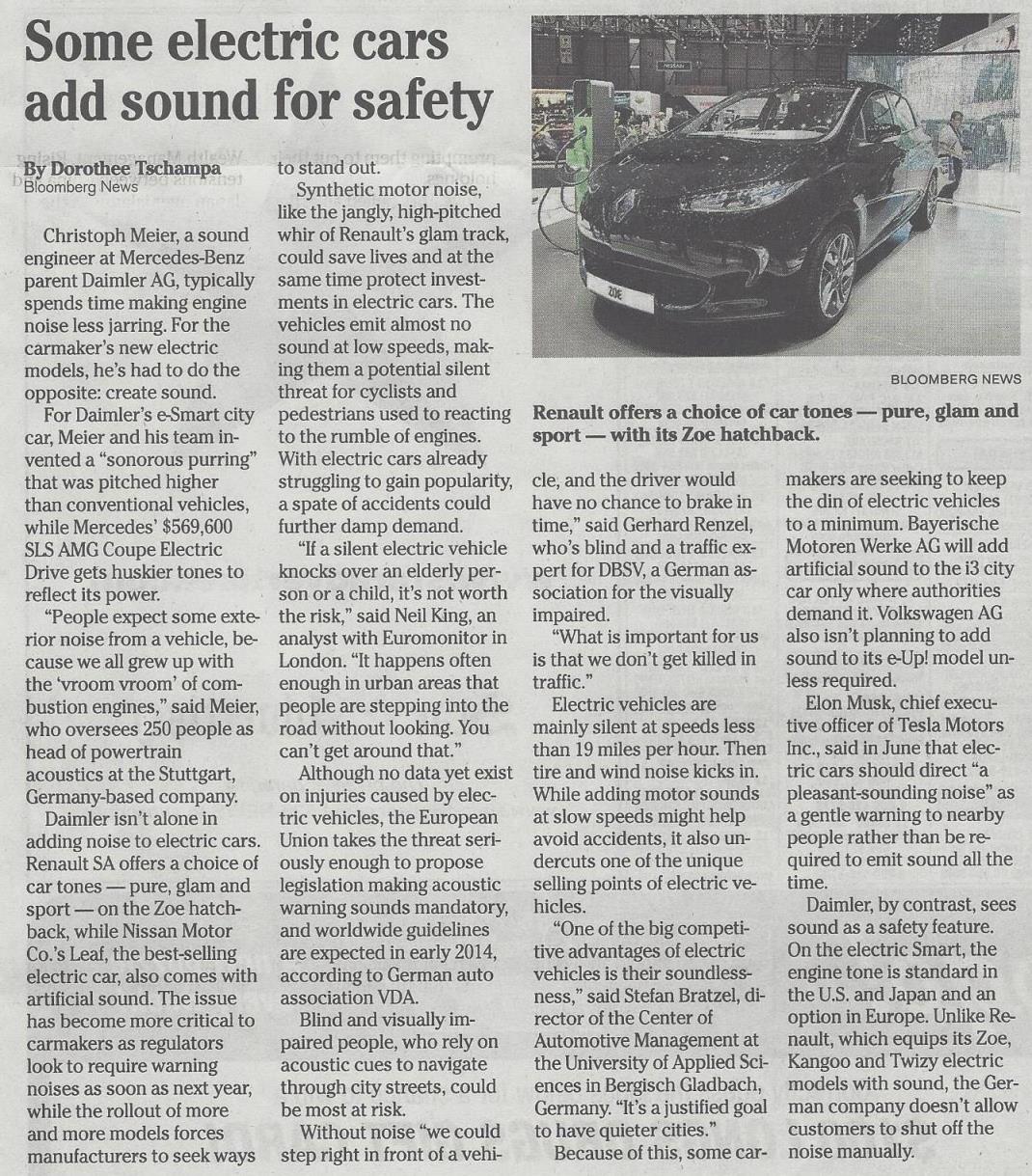Automotive Audio Pedestrian Safety Device
By Rick Wagner, September 20, 2007
1. Introduction
As the plausible deniability of peak oil
(http://en.wikipedia.org/wiki/Peak_oil)
becomes untenable in the near future,
(http://downdenial.blogspot.com/2007/08/peak-oil-in-mainstream-press.html)
automotive fuel
costs are projected to increase sharply,
(http://www.peak-oil-crisis.com/)
which will drive the increasing popularity of electric
and hybrid automotive vehicles. Electric and, to a lesser extent, hybrid vehicles produce very
little propulsion system noise, even at full power. All-electric cars will become popular with
commuters because commercial grid electric power will continue to be available from coal, natural
gas, nuclear, wind, and solar sources. The percentage of these low noise vehicles (LNVs) on the
road should increase sharply in the next decade, and pedestrians, used to sensing oncoming traffic
from engine noise, will increasingly be involved in accidents by inadvertently stepping into the
path of oncoming vehicles.
2. The Problem
As LNVs become more common, pedestrian accidents will increase because of the essentially silent
operation of these vehicles. The cost of these unnecessary accidents is hard to project accurately
but is likely to be quite significant. It is likely that in later decades, as LNVs dominate
vehicular traffic, pedestrians will become accustomed to not relying heavily on audio senses,
and the accident rate will decline, but the damage will have been done.
Many vehicles today are required by law to have (sometimes obnoxious) noise-making capability
during backing. However, the danger with near-silent moving electric cars and other LNVs is that
pedestrians unconsciously rely on their sense of hearing when walking near vehicular traffic.
3. The Solution
I propose to supplement the sound a LNV does make with an audio device. Further, such a device
could be constructed such that the sound level it produces is tailored to the environment and
operating conditions so that it would not become obnoxious or disturb quiet neighborhoods.
There are many types of sound that can be produced to let pedestrians know a vehicle is
approaching. Simulating the sound of a reciprocating engine is an obvious choice. Another
method is to sample the low level motor, gear, and tire noise of the LNV and amplify it.
Control could be effected by determining the ambient level of sound in the environment,
and using that level with knowledge of the vehicle’s speed, compute an appropriate output
sound level.
The device would be mounted in an appropriate place within the LNV, with microphones to
sample ambient sound as necessary to the sound output computation algorithm employed,
and one or more speakers or sound producing devices.
A schematic of the proposed device is shown below in Figure 1:

Figure 1: Schematic diagram of the automotive audio pedestrian safety device.
In quiet neighborhoods, at low speeds, the amount of supplemental sound will be smaller than in,
say, a parking lot adjacent to a busy highway. By adapting the sound level to the situation,
the control unit will minimize the noise pollution contribution to the environment, while also
reducing the probability of an avoidable pedestrian or bicyclist accident.
Honolulu Star-Advertiser Article
Six years after Northrop-Grumman declined to file for a patent on the above described invention, it appears that
such devices are coming into use with some automobile manufacurers. The article below appeared in the Honolulu
Star-Advertiser in the first week of January, 2014.

index.html, this hand crafted HTML file was created July 6, 2010.
Last updated January 3, 2014, by
Rick Wagner. Copyright 2010-2014, all rights reserved.


